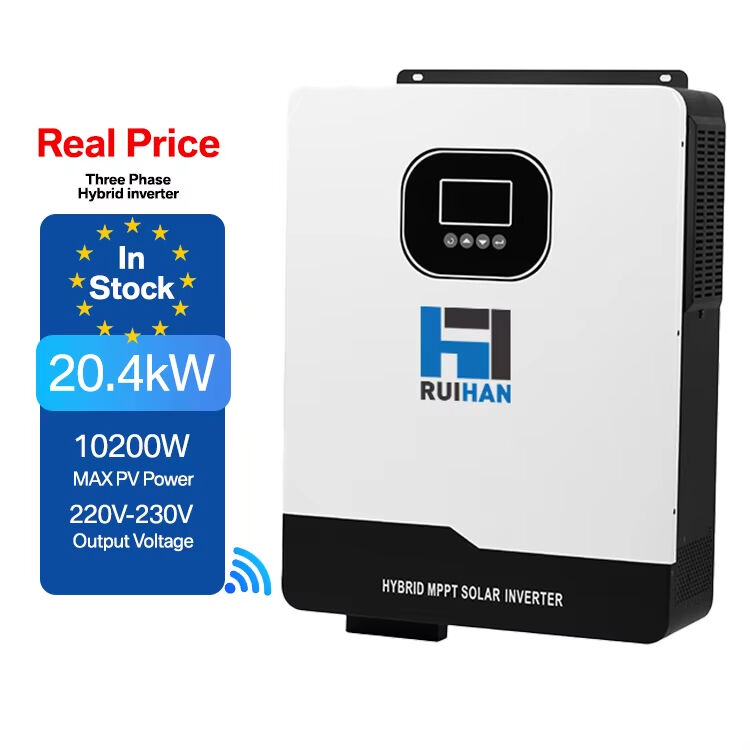
Is your home solar PV system unable to store electricity? Does it fail you during power outages? The recently popular 10.2kW hybrid solar inverter, with its intelligent MPPT and pure sine wave output technologies, combined with a lithium battery solution, achieves "more generation, better storage, and lower usage," making it a top choice for home energy upgrades. 3 Key Highlights Addressing Home Solar PV Pain Points 1. Intelligent MPPT, Maximizing Solar Utilization Equipped with a high-efficiency MPPT controller, it achieves a 99.2% efficiency in tracking the maximum power point of the solar panels, generating 15% more power than ordinary inverters. Even on cloudy days or in areas with uneven sunlight, it maximizes solar energy capture. The 10.2kW high power output is compatible with most home solar arrays, generating enough power to meet daily household appliance needs. 2. Pure Sine Wave Output for Worry-Free Appliance Use: Single-phase pure sine wave output with a stable voltage of 220V±5% and a precise frequency of 50Hz, compatible with all household appliances such as refrigerators, air conditioners, and washing machines. Avoids the "noise damage" problem associated with traditional inverters, extending appliance lifespan, especially suitable for voltage-sensitive computers and smart home devices. 3. Hybrid Energy Storage + Emergency Power for Uninterrupted Electricity Use: Designed specifically for home lithium battery solutions, it achieves intelligent switching between "photovoltaic priority power supply + surplus power storage in batteries + grid backup." In the event of a grid power outage, it automatically switches to battery power in 0.1 seconds, allowing refrigerators, lighting, and routers to continue operating; surplus power can be stored in lithium batteries for peak-hour use, directly saving over 50% on monthly electricity bills. Home Real-World Test: An Energy Revolution for Ordinary Families Mr. Zhang's Home in Beijing (100㎡): After installation, the monthly photovoltaic power generation is approximately 800 kWh. Surplus electricity is stored in a lithium battery for peak-hour use and emergency backup. The average monthly electricity bill has dropped from 300 yuan to 80 yuan, saving 2600 yuan per year. The expected payback period is 5 years.
Read More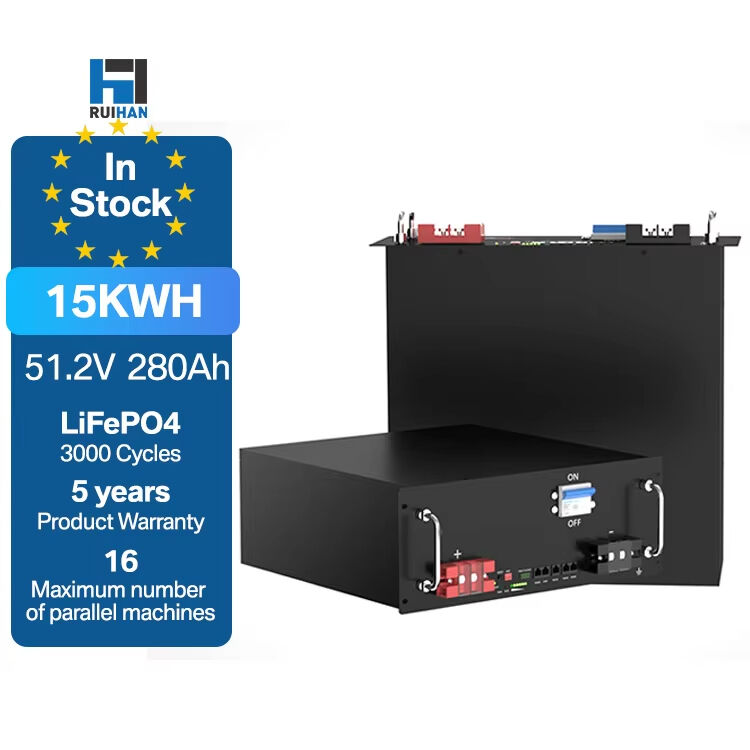
For hospitals, power outages are life-threatening; for data centers, they mean millions of dollars in losses. This 15kW energy storage system (51.2V 280Ah) is tailor-made to address these critical pain points—with its dual-battery option, intelligent control, and broad compatibility, it's your most reliable backup power partner. Key Advantages: 4 Reasons to Choose It 1. Dual-Battery Option for Flexible Needs Supports both lead-acid (economical) and lithium-ion (long life, high efficiency). The 280Ah capacity ensures 8-12 hours of continuous power for critical equipment such as hospital ventilators or data center servers. 2. Intelligent Control for Maximized Efficiency Equipped with MPPT/PWM dual controllers, solar conversion efficiency is increased by up to 99%. Automatic switching between mains and backup power within 10 milliseconds ensures zero interruption of medical procedures or data transmission. 3. Wide Compatibility, Seamless Integration - Output: 110-220V voltage, 50/60Hz frequency, compliant with global equipment standards. - Inverter: Single-phase/split-phase/three-phase selectable to meet different load requirements. - Solar Matching: Perfectly compatible with monocrystalline N-type/Topcon/PERC solar panels, building a green "solar + energy storage" system. 4. Industrial-Grade Reliability UL and CE certified. Operates stably in environments ranging from -20℃ to 60℃, suitable for medical cleanrooms or data center server rooms. Practical Application Value - Hospitals: Can continuously power more than 20 ICU devices; ensures uninterrupted power supply to operating rooms. - Data Centers: Supports backup power for more than 50 servers; through solar integration, monthly electricity costs can be reduced by 18%. Exclusive Offer: Free on-site power demand assessment for the medical and IT industries! Customize your backup power solution now.
Read More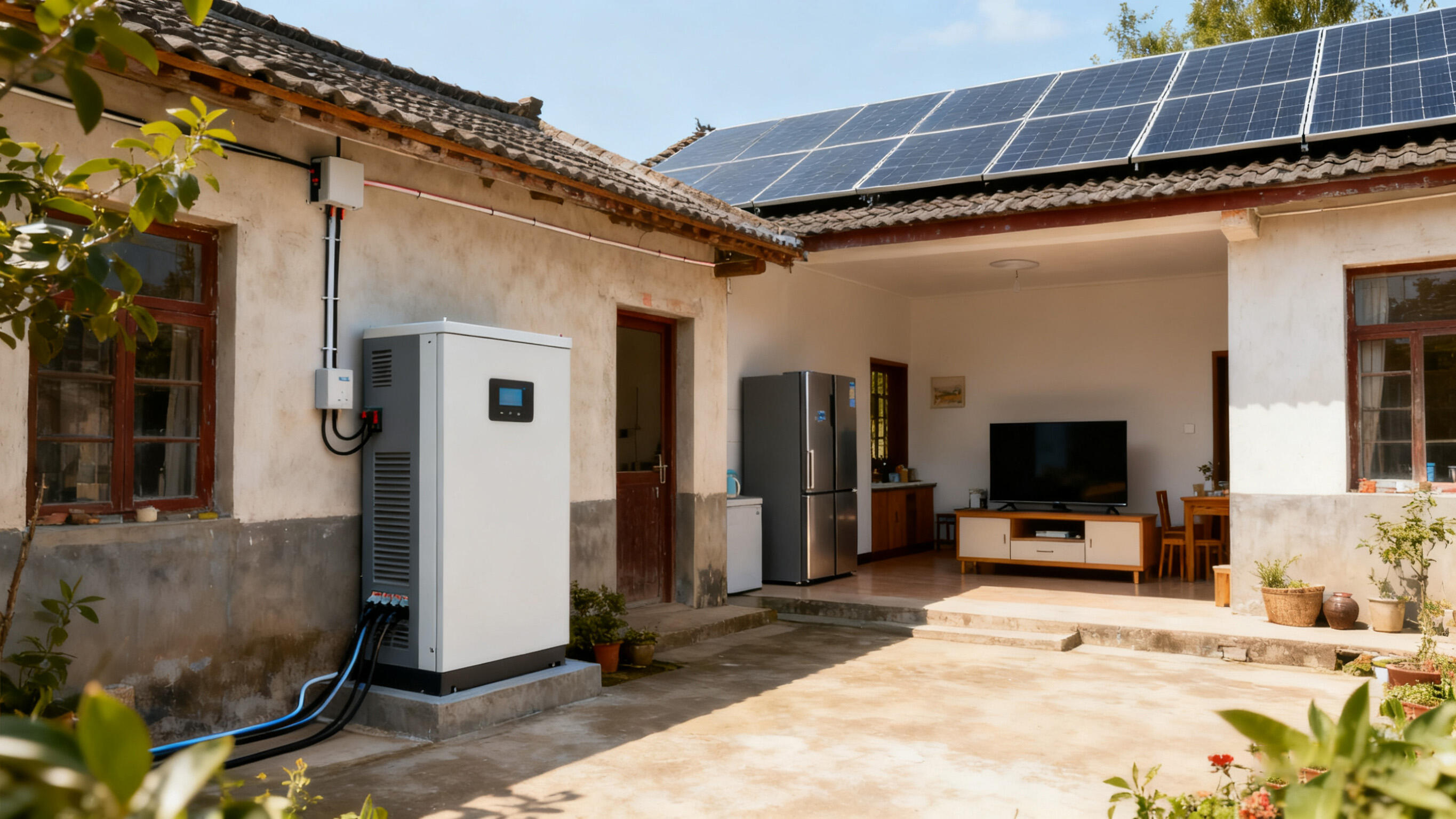
As clean energy adoption grows, choosing the right battery storage depends on your needs. Below is a simplified breakdown of how grid-scale, commercial, and residential systems differ—critical for efficiency, compliance, and ROI. 1. Grid-Scale ...
Read More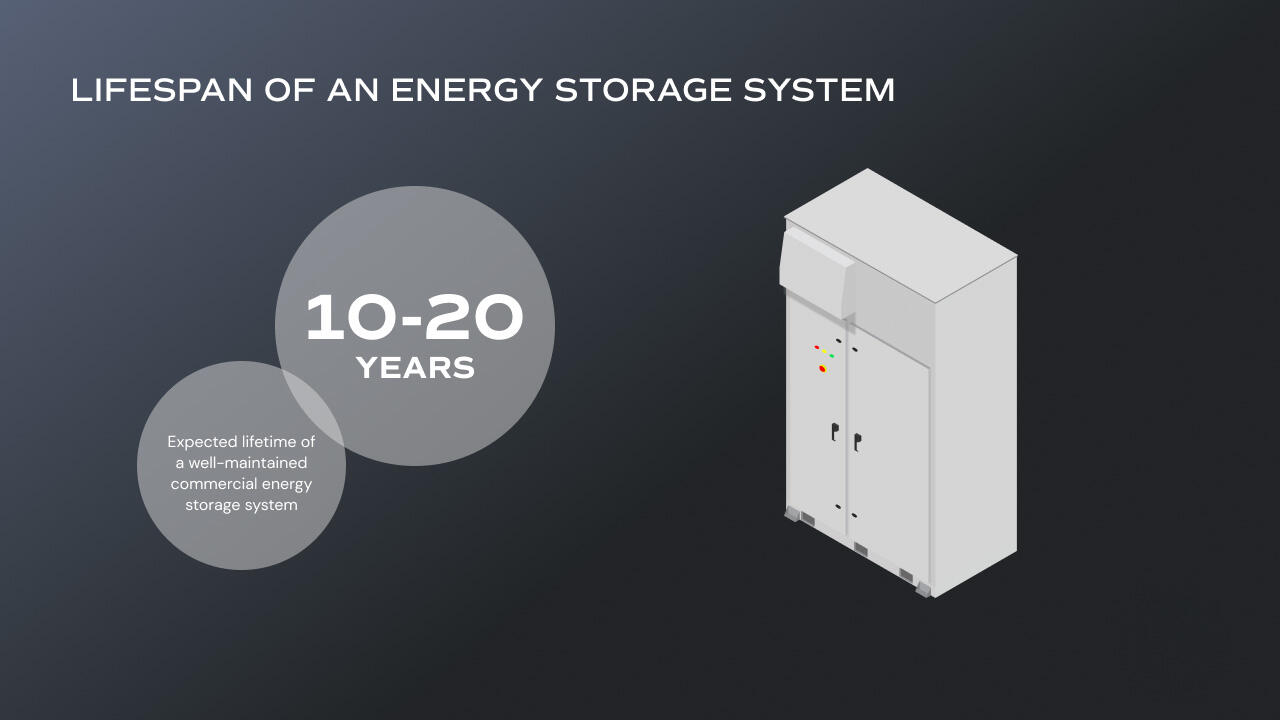
In the fast-growing commercial energy storage market, one critical question for businesses is: How long can these systems reliably store energy? The answer hinges on technology type, system design, and usage patterns—but modern solutions offer ...
Read More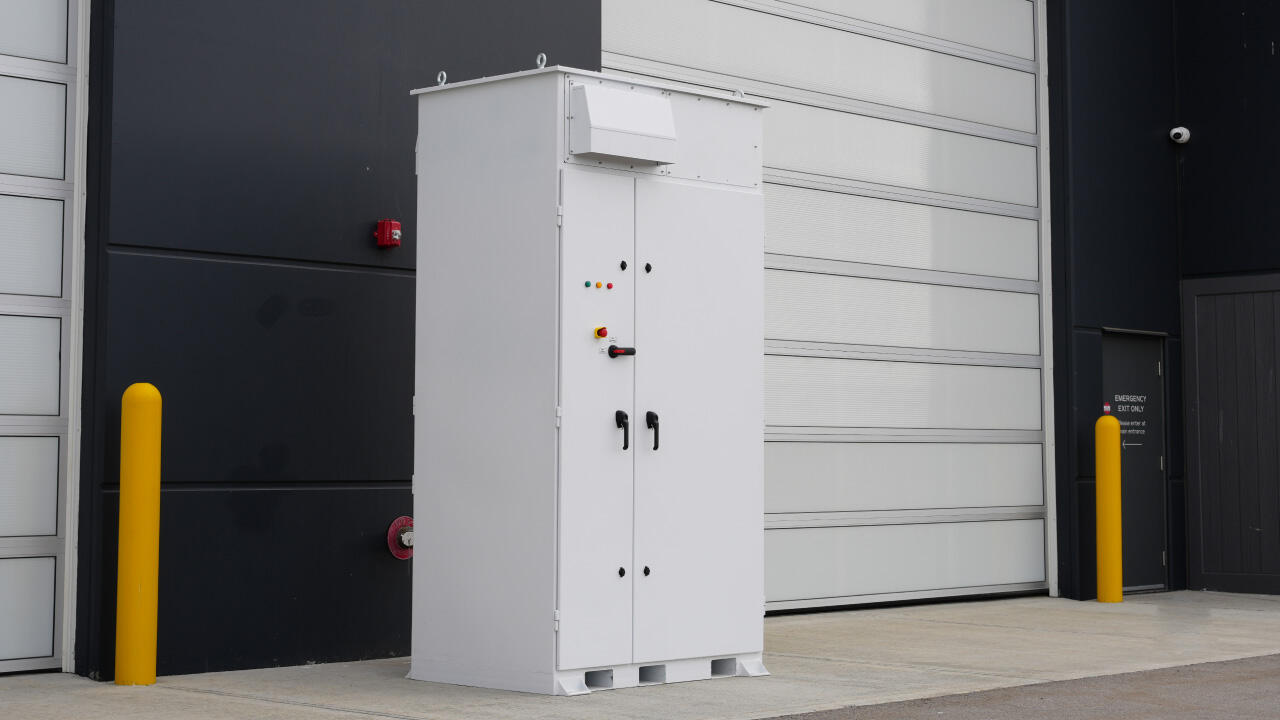
One of the core questions in business energy management is, "How much electricity can a commercial battery storage system store?" In fact, its storage capacity is not a fixed value, but rather flexibly customized based on system configuration and bus...
Read More
Commercial battery energy storage systems offer numerous benefits to businesses, making them an increasingly popular choice in today's energy sector. Here are some key advantages: Energy Cost Savings: By charging during off-peak hours (when electricity prices are lower) and discharging during peak hours (when electricity prices are higher), these systems can significantly reduce costs. This practice, known as load shifting or peak shaving, can dramatically reduce a business's energy bills. Demand Cost Management: Businesses typically pay demand costs based on their peak electricity consumption. With battery energy storage systems, businesses can draw power from the storage system during peak hours, effectively reducing peak grid consumption and associated demand costs. Resilience and Reliability: Commercial battery energy storage systems can provide backup power during grid outages, ensuring uninterrupted business operations. This is crucial for businesses that rely on continuous power supply, such as cold storage facilities, hospitals, and manufacturing plants. Supporting Renewable Energy: These systems are an ideal complement to renewable energy sources such as solar and wind power. They can store excess energy generated during peak hours for use during periods of low or no power generation, such as nighttime solar power generation. Electric Vehicle (EV) Charging Buffer: As the use of electric vehicles (EVs) increases, the demand for charging stations also grows. Commercial battery storage systems can help manage the load on EV charging stations by storing electricity during periods of low demand and supplying power during periods of high demand, thus preventing overload and maintaining a stable power supply. Reduce Carbon Footprint: By optimizing energy use and effectively utilizing renewable energy, commercial battery storage systems can help businesses reduce their carbon footprint and contribute to achieving sustainability goals. Grid Services: In some cases, businesses with commercial battery storage systems can participate in demand response programs or provide other grid services, thereby generating additional revenue or saving costs.
Read More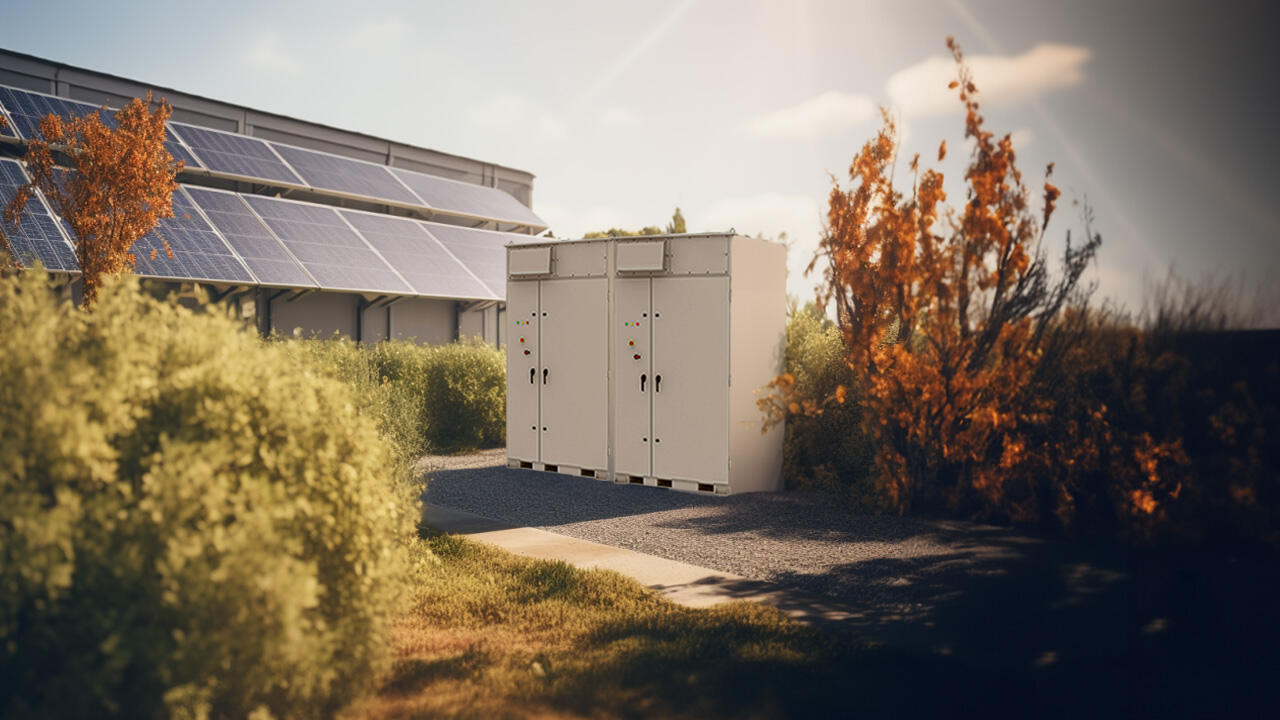
As enterprises increasingly demand higher levels of energy cost control and power supply stability, commercial battery energy storage systems have become a core solution due to their characteristics of "on-demand energy storage and intelligent scheduling." Its operation is not a simple energy storage activity, but a complete closed-loop energy management system encompassing "charging - storage - discharging - management." Each stage is designed around the actual needs of the enterprise. The specific operational process is as follows: I. Charging Stage: Capturing Electricity from Multiple Sources, Balancing Economy and Cleanliness Charging is the starting point for the operation of a commercial battery energy storage system. Its core is "obtaining electricity from low-cost, clean channels," laying the foundation for subsequent use: * Off-Peak Charging: The system automatically draws electricity from the grid during off-peak hours when electricity demand is low and electricity prices are cheap (such as at night and early morning). At this time, electricity costs are typically only 1/3 to 1/2 of those during peak hours, significantly reducing energy storage costs. * Renewable Energy Charging: If the enterprise is equipped with solar panels, wind turbines, etc., the system can directly capture and store this clean electricity, avoiding waste from "generating electricity but not using it, and not generating electricity when needed." This also reduces the enterprise's dependence on traditional thermal power, contributing to a low-carbon transition. The key advantage at this stage lies in its "flexible source selection"—the system can automatically switch charging channels based on electricity price fluctuations and renewable energy generation, without manual intervention, ensuring that every unit of stored electricity is either economical or clean. II. Storage Stage: Advanced Battery Technology Ensures Long-Term Stable Storage Without Loss After charging, the electrical energy is stored in the battery in the form of chemical energy, ready to be used when needed. The core of this stage is "safe and long-term storage": Technical Support: The system uses advanced battery technologies such as lithium iron phosphate, with a cycle life exceeding 3000 cycles (based on one charge-discharge cycle per week for enterprises, it can be used for more than 10 years). It also has overcharge, over-discharge, and short-circuit protection functions to avoid safety hazards such as battery bulging and fire; Capacity Adaptability: Storage capacity can be customized according to enterprise needs (ranging from tens of kWh to thousands of kWh). Small enterprises can meet emergency power supply needs, while large factories can support the power consumption of production lines for half a day to a day, achieving "storing only what is needed" and avoiding resource waste; Low Loss Characteristics: The battery has a low self-discharge rate (monthly loss <2%), maintaining a stable energy reserve even during long-term storage (such as backup during off-seasons), ensuring "ready to use" when needed. III. Discharge Phase: Precisely Responding to Demand and Solving Enterprise Electricity Pain Points When an enterprise has an electricity demand, the system will activate the discharge mode, converting stored chemical energy into electrical energy and delivering it to the required equipment. The core principle is "timely power supply at critical nodes." Main application scenarios include: Peak-Hour Cost-Reducing Discharge: During peak electricity consumption periods such as daytime production and business hours, when electricity prices rise significantly, the system will prioritize releasing stored low-priced electricity to replace high-priced grid electricity, directly reducing enterprise electricity costs (some enterprises can achieve electricity cost reductions of over 30%); Emergency Discharge During Power Outages: In the event of a sudden grid interruption, the system can switch to backup power within 0.1 seconds to supply power to critical facilities such as production lines, servers, and refrigeration equipment, avoiding production losses due to power outages (such as cold chain disruptions in food factories, data loss in data centers, etc.); Clean Energy Supplementation: At night or on cloudy days, when solar and wind power generation ceases, the system can release clean energy stored during the day, ensuring the enterprise's continuous use of green energy and uninterrupted low-carbon operations. IV. Management Phase: Intelligent Control System Scheduling Ensures Every Kilowatt-Hour of Electricity is Used Effectively The orderly operation of the above three phases relies on the system's "intelligent management component"—the "brain" of the commercial battery energy storage system. Its core is "optimizing energy allocation based on enterprise needs": * **Data-Driven Decision-Making:** The management system collects real-time data on electricity prices, enterprise electricity load, and renewable energy generation. Through algorithmic analysis, it automatically determines "when to charge, when to discharge, and which charging channel to use"; * **Customized Strategies:** Enterprises can set management rules according to their own needs, such as "prioritizing discharge during production hours and mandatory off-peak charging at night" and "prioritizing clean energy storage when solar power generation exceeds 50%," allowing the system to fully adapt to the enterprise's operational rhythm; * **Remote Monitoring:** Managers can view the system's charging and discharging status, remaining power, and equipment health in real-time via computer and mobile phone, achieving "remote control and anomaly warnings" and reducing operation and maintenance costs. **Summary: The Enterprise Value Behind the Operational Logic** The four-phase operation of a commercial battery energy storage system is essentially "achieving the 'spatiotemporal transfer' of energy through technological means"—storing low-cost, clean electricity for use when prices are high and urgent. This operating model not only helps companies reduce energy costs and ensure stable power supply, but also drives their transformation towards efficient and low-carbon operating models, becoming a key tool for enhancing competitiveness in the wave of energy transformation.
Read More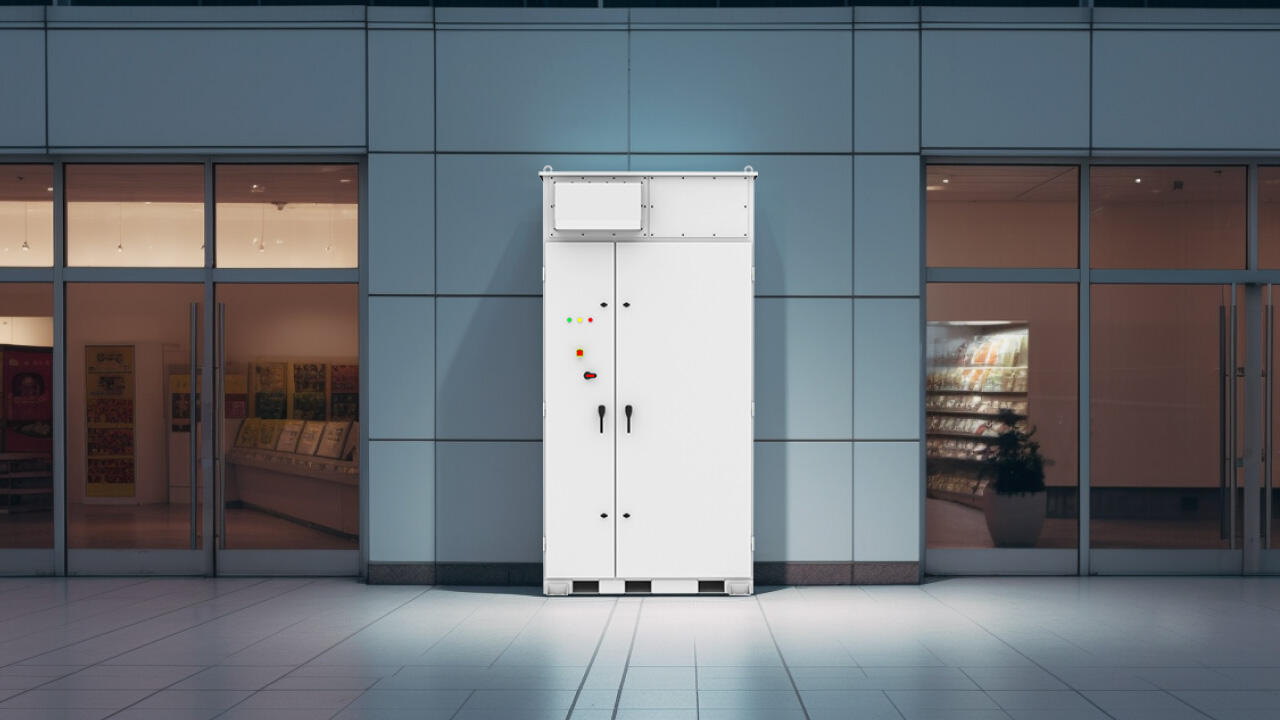
As the global energy mix shifts toward cleaner and smarter energy, commercial battery energy storage systems have become essential for enterprises to optimize energy use and reduce operating costs. They serve not only as "energy warehouses" for storing electricity but also as a key technological enabler for sustainable business development. Their core value and operational logic can be further analyzed from the following three perspectives. 1. Core Definition: The "Smart Energy Storage Hub" of Enterprise Energy Infrastructure Commercial battery energy storage systems are clean energy storage devices developed based on advanced battery technology. Their core function is to capture and store electricity, flexibly dispatching it when needed to provide stable and efficient power to the enterprise's energy infrastructure. Compared to home energy storage systems, they focus more on enterprise-level needs. Whether in manufacturing, retail, data centers, or healthcare settings, these systems enable enterprises to "autonomously control the timing and mode of electricity use," thereby improving energy efficiency, reducing reliance on traditional power grids, and promoting the transition of operational models toward low-carbon development. II. Core Logic: "Diversified Energy Storage + Flexible Power Use" for All-Scenario Adaptation The operation of commercial battery energy storage systems revolves around "storing effectively and using efficiently," forming a complete energy management closed loop from energy source to actual application: 1. Diversified Energy Sources, Balancing Economic Efficiency and Clean Energy The system can store energy from a wide range of sources, covering the diverse electricity needs of businesses: Off-peak Power: Power is drawn from the grid during off-peak hours (such as nighttime) when demand is low and prices are low, reducing storage costs. Renewable Energy: Power generated by a business's own solar panels and wind turbines is directly stored, avoiding the waste of unused clean energy and helping businesses reduce carbon emissions. 2. Multi-scenario power scheduling addresses core enterprise pain points. Stored electricity can be flexibly allocated based on actual business needs, precisely addressing different scenarios: Peak-hour cost reduction: During peak hours (such as daytime production and shopping mall hours), low-priced stored electricity is prioritized for use, replacing high-priced grid power, directly reducing energy costs. Power outage emergency power supply: In the event of a sudden grid outage, the system quickly switches to backup power mode, ensuring uninterrupted operation of critical facilities such as production lines, servers, and refrigeration equipment, minimizing downtime losses. Grid collaboration and interaction: In certain policy-supported areas, enterprises can feed excess stored electricity back to the grid, participating in grid peak-shaving services and generating additional revenue. III. Core Value: Multi-Dimensional Empowerment from "Cost Control" to "Sustainable Development" The value of commercial battery energy storage systems goes far beyond simply storing electricity. They provide businesses with comprehensive energy management solutions: Cost Reduction and Efficiency Improvement: A "off-peak storage + peak discharge" model reduces electricity bills, while minimizing production disruptions caused by power outages and improving operational efficiency. Energy Independence: Eliminating sole reliance on the traditional power grid and integrating renewable energy to achieve partial power self-sufficiency, enhancing the stability and resilience of a business's energy supply. Intelligent Management: The system can be programmed to adapt to business needs, automatically adjusting charging and discharging strategies based on real-time electricity prices, peak demand periods, and production schedules, eliminating the need for manual intervention and reducing management costs. Green Transformation: By efficiently utilizing clean electricity, businesses can reduce carbon emissions, contributing to the achievement of the national "dual carbon" goals while also fostering a green and environmentally friendly brand image. As the "new infrastructure" of enterprise energy management, commercial battery energy storage systems are becoming the preferred choice of an increasing number of businesses. It not only serves as a protective shield against energy price fluctuations and ensures power stability, but also acts as an accelerator to propel businesses toward efficient, low-carbon, and sustainable development, providing strong support for companies to gain a competitive advantage in the new energy landscape. If you're interested in commercial battery energy storage system solutions for different industries, contact our official website for a personalized quote.
Read More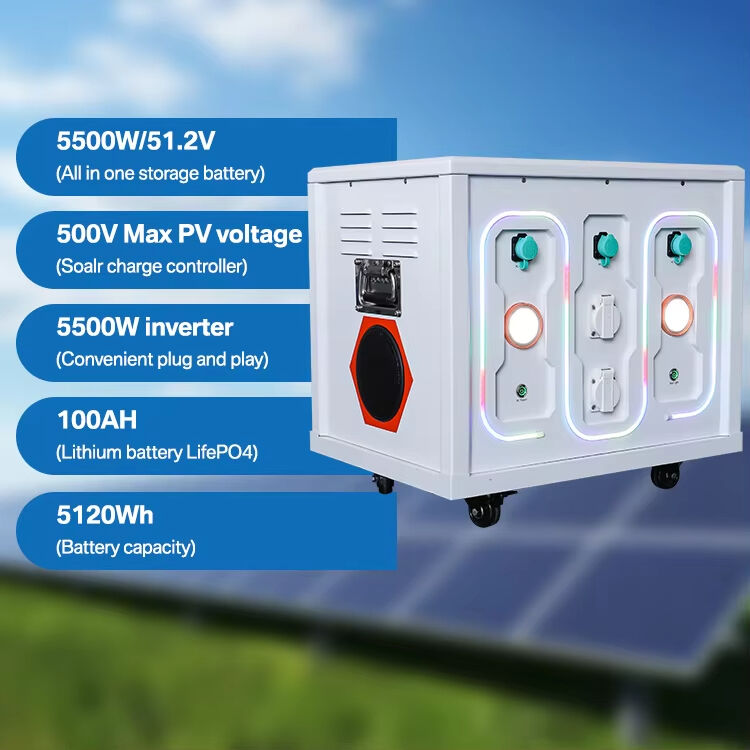
With the growing demand for emergency power in households and the growing popularity of the concept of "green backup power," XX New Energy recently launched a 5.5KW/5.12KWh multi-functional, all-in-one home energy storage system. Based on safe and durable LiFePO4 batteries, this product addresses the dual needs of "backup power" and "small load" daily use, addressing the shortcomings of traditional home energy storage systems, such as insufficient power and poor adaptability, and becoming a new choice for home electricity use. Three Core Advantages Address Home Electricity Pain Points This home energy storage system is designed to perfectly meet household needs, with clear key highlights: 1. 5.5kW Power + 5.12kWh Capacity, Precisely Matching Supply and Demand: With a rated output power of 5.5kW, it can easily power small loads such as refrigerators, air conditioners (1.5HP), and lighting, meeting daily household electricity needs. The 5.12kWh nominal energy capacity ensures continuous operation of core equipment for 8-10 hours during a power outage, resolving the issues of insufficient backup power and insufficient high-power operation. 2. LiFePO4 Battery, Dual Guarantee of Safety and Durability: Equipped with automotive-grade lithium iron phosphate batteries, it eliminates the risk of bulging and fire, and boasts a cycle life of over 3,000 cycles (over 10 years based on weekly charge and discharge). With a charging temperature range of 0-65°C and an exhaust temperature tolerance of -20-65°C, it can operate reliably in extreme climates, eliminating concerns about the safety and short lifespan of traditional batteries. 3. Wide voltage adaptability and plug-and-play operation ensure zero-complication installation and use: Supports 220/230/240VAC nominal input, covering a voltage range of 54-264VAC ±3V, adapting to various household electrical circuits. Universal 50/60Hz frequency operation eliminates the need for complex modifications and allows for immediate use right out of the box, even for the elderly. Dual-scenario core value, adapting to diverse household needs In practical applications, this energy storage system delivers dual benefits in both emergency and daily life: -Backup power scenario: Automatically switches power supply during a grid outage, ensuring that refrigerator ingredients are kept safe and lighting and communication equipment function normally. This is particularly suitable for power outages during peak summer demand, typhoons, and rainstorms. -Light-load daily scenario: Solar panels can be added for daily use (optional) to power balcony grow lights and small appliances, reducing reliance on the mains and indirectly reducing electricity bills.
Read More
Energy Storage Technology has launched an 800W AC output portable energy storage system focused on safety, durability, and full-scenario adaptability. Featuring an aluminum housing, high-capacity LiFePO4 batteries, and a stable inverter, this product...
Read More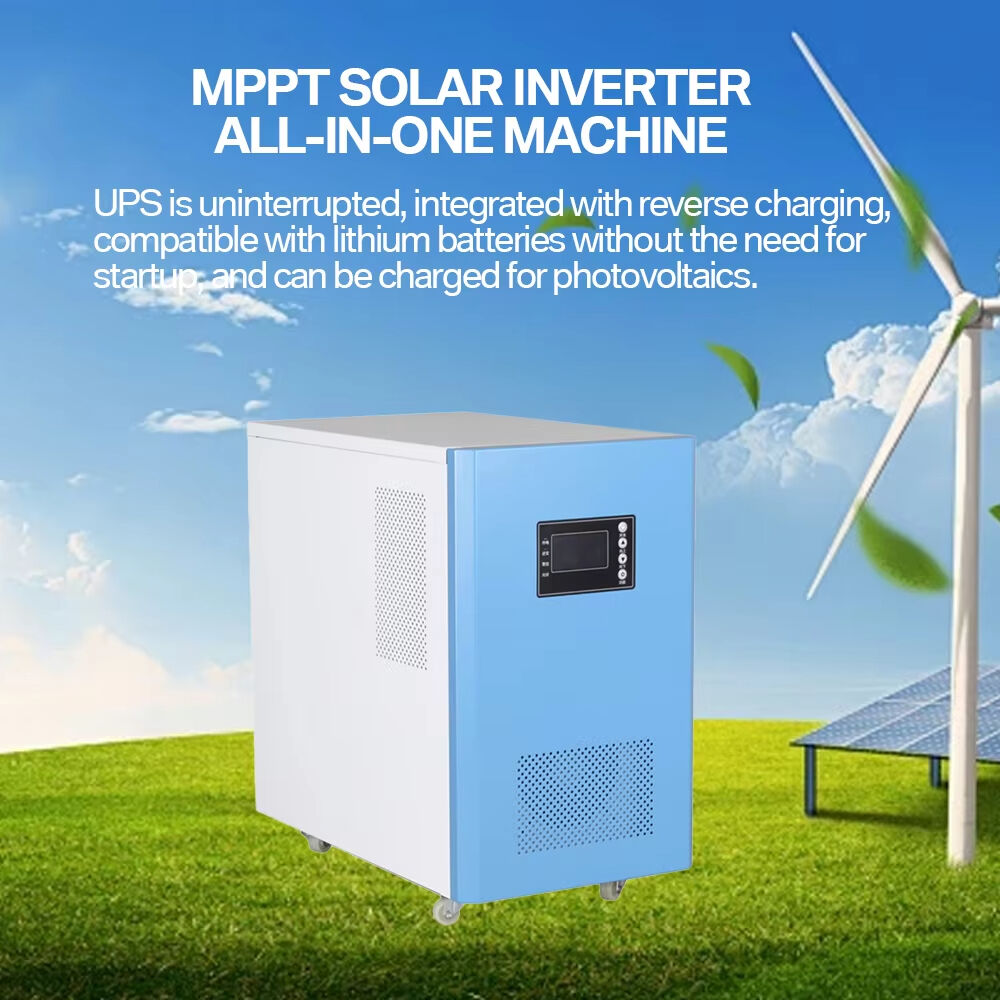
Are you facing "power mismatch, battery compatibility issues, and inefficient PV charging" challenges in off-grid home applications? The 50Hz off-grid low-frequency hybrid solar inverter has officially launched. Covering power ranges from 3kW to 15kW, it includes a built-in MPPT charge controller and is highly compatible with a wide range of household batteries. This one-stop solution offers flexible adaptation and efficient energy replenishment for off-grid home power and solar energy storage systems. Core Advantages: Three Key Features Address Off-Grid Home Use 3kW-15kW Power Range, Suitable for Different Household Sizes: From small households with daily electricity needs (3kW-5kW) to large households with high power needs (10kW-15kW), this comprehensive power range eliminates the need to repeatedly select a model based on household power consumption; a single device can meet different power needs. High Compatibility with Multiple Battery Types, Eliminates "Interface Anxiety": Supports 12V, 24V, 48V, 60V, 72V, and 96V battery voltages, and is compatible with mainstream household battery types such as lithium iron phosphate, ternary lithium, and lead-acid. Upgrading or replacing old batteries eliminates the need to simultaneously replace the inverter, reducing household costs. Built-in MPPT Charging Control for More Efficient PV Recharging: The integrated MPPT charge controller tracks the maximum power point of the solar panel in real time, improving PV conversion efficiency by 8%-12% compared to conventional controllers. This allows for faster daytime power storage and longer-lasting off-grid battery life. 50Hz Low-frequency hybrid design for more stable home use: Utilizing low-frequency hybrid technology, the output waveform matches household power frequency standards, ensuring no tripping when driving high-power appliances like refrigerators and air conditioners. Its strong anti-interference capabilities also prevent damage to delicate equipment like computers and routers. Positive market feedback, making it a top choice for off-grid home use. Since its launch, this inverter has quickly gained popularity among users of self-built homes, villas, and homes in remote areas. One homeowner in a remote area commented, "The 15kW power can power all the appliances in the house. It's compatible with my 48V lithium iron phosphate battery, and the MPPT charging function is fast, providing enough power for basic needs even on rainy days." A photovoltaic installer stated that the product's multi-power and multi-battery compatibility significantly reduces inventory inventory and has increased customer satisfaction by 50%. Industry analysts indicate that with the growing demand for off-grid home electricity and solar energy storage, this type of off-grid inverter, offering "flexible power, high compatibility, and efficient energy replenishment," precisely addresses the core challenges of home use and is expected to become a mainstream choice in the off-grid home power supply market. For information on power selection, battery compatibility testing, or a quote, please contact us!
Read More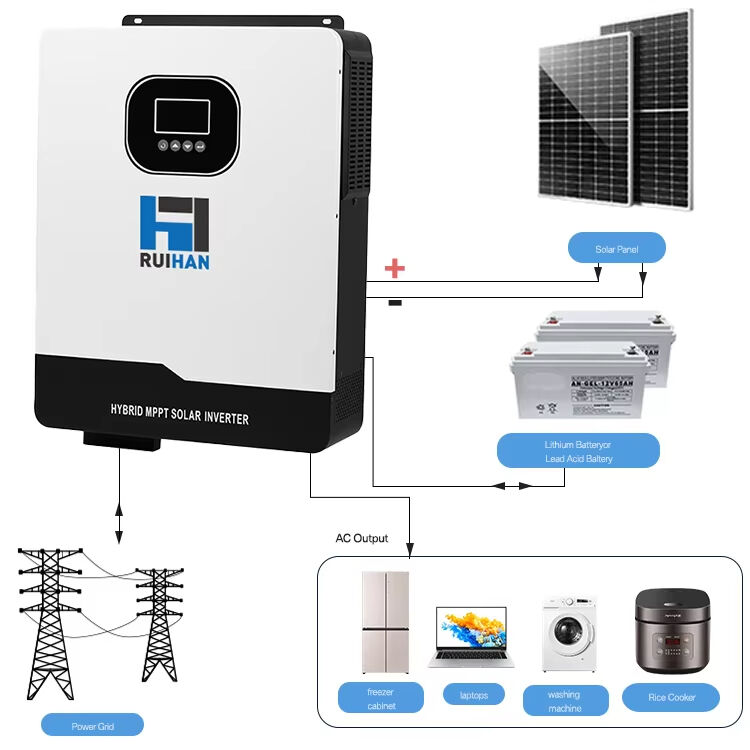
Is home solar power generation plagued by low conversion rates, difficult compatibility, and unstable power supply? Addressing the core pain points of home users, the popular 10.2KW hybrid solar inverter has officially launched. Equipped with intelligent MPPT technology and pure sine wave output, this product is specifically designed for home lithium batteries, achieving the trinity of "efficient photovoltaic conversion + stable power supply + lithium battery compatibility," providing a cost-effective solution for home solar energy storage systems. Core Advantages: Four Key Features Meet Home Needs 10.2kW High Power + Intelligent MPPT for Maximum PV Conversion: The rated power covers daily peak household electricity consumption. Equipped with intelligent MPPT maximum power point tracking technology, it captures the optimal power generation efficiency of photovoltaic panels in real time, improving conversion efficiency by 5%-8% compared to conventional inverters, thereby increasing solar power generation. Pure sine wave output, zero damage to appliances: The output waveform is stable and matches the mains standard, preventing pulse current damage to appliances such as refrigerators, air conditioners, and computers, extending appliance lifespan while ensuring smooth operation of sensitive devices such as routers and projectors. Precise Compatibility with Home Lithium Batteries, More Flexible Energy Storage: Optimized for mainstream household lithium battery types such as lithium iron phosphate and ternary lithium batteries, it supports intelligent charge and discharge control and seamlessly integrates with home energy storage batteries, storing electricity during the day and providing power at night or during power outages, reducing grid dependence. Single-phase design, easy installation for home use: Compatible with single-phase 220V The 10.2kW inverter is compact and easy to install, requiring no complex circuit modifications. It can be flexibly placed in spaces like balconies and storage rooms, offering both practicality and space-friendliness. Rising market popularity makes it a top choice for home photovoltaic systems. Since its launch, this inverter has quickly gained popularity among home photovoltaic users thanks to its combination of high efficiency, adaptability, and safety. One homeowner commented, "After installing the 10.2kW inverter, I've converted more solar power, and the lithium battery stores enough energy for nighttime use, saving me nearly 200 yuan per month on my electricity bill. The pure sine wave output allows me to use even delicate appliances with confidence." A photovoltaic installer commented that the product's strong adaptability and high installation efficiency have significantly increased customer repurchase and recommendation rates. Industry analysts indicate that with the growing demand for home photovoltaics and energy storage, this type of hybrid inverter, combining high power, intelligence, and adaptability, precisely meets the core needs of home users for "saving electricity bills and maintaining a stable power supply," and is expected to continue to lead the home solar inverter market. For product specifications, compatibility testing, or a quote, please contact us!
Read More Hot News
Hot News2025-11-21
2025-11-19
2025-11-12
2025-11-11
2025-11-05
2025-11-04